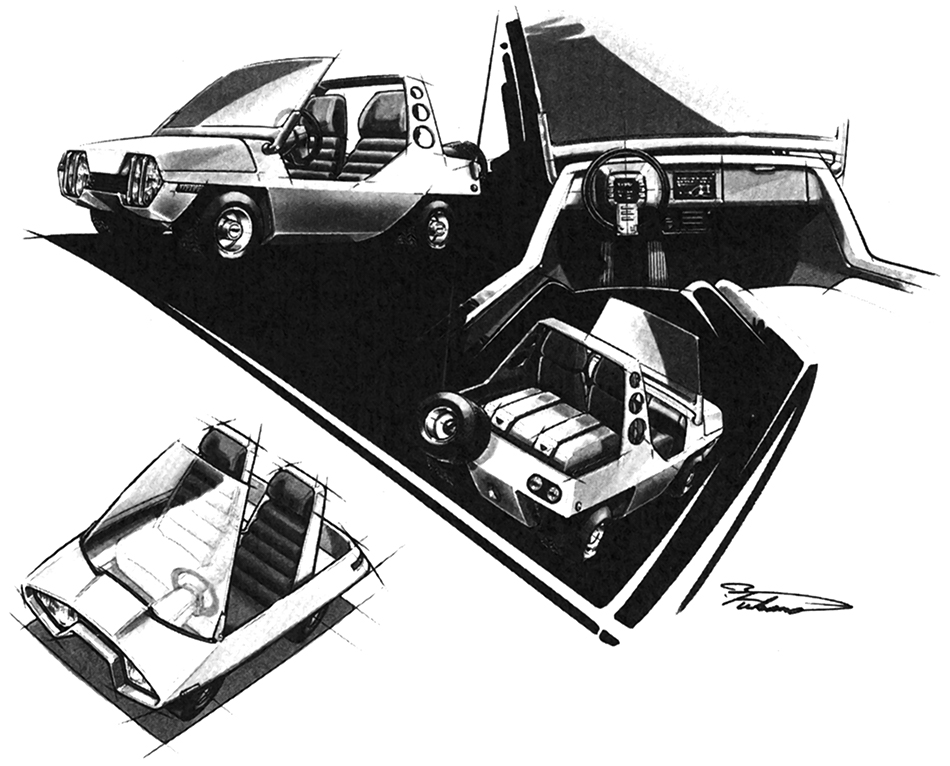Installment.02: Elec-Car: An Overview
INSTALLMENT.02
Elec-Car: An Overview
Six years have passed since ZZ…
This April marks the premiere of the new TV series Mobile Suit V Gundam (VG for short). The studio is bustling with activity. Even as I type this manuscript, beside me, Kawaguchi, VG’s setting designer, is building a fortress of reference materials from past Gundam series and publications.
(I’m not kidding here… Simply arranging all the past Gundam setting materials creates a wall by itself. Though for VG, since the story starts on Earth, most of these colony and lunar setting materials won’t be relevant until later…)
(Wait… could this be a serious issue…)
What means of transportation could they be using on Earth instead of elec-cars?
Well, that’s something for viewers to discover when they watch the show.
Now, let’s move on to our main topic.

Elec-Car: An Overview
The year is ×××× A.D.
As humanity prepared to transition to a new calendar system within decades, space colony construction accelerated while the world buzzed with various competitions and exhibitions. Space colonies represented humanity’s new frontier. Every aspect of colony life underwent rigorous testing and selection, from major infrastructure to minor amenities, both hardware and software.
The colonial migration initiative reinvigorated global corporate activity, which had long been constrained by environmental preservation measures.The automotive industry, a powerhouse of late 20th-century technological advancement and international trade, found new purpose in this space-age challenge. The “Electric Car” (elec-car), alongside colony peripheral railways, was projected to serve as a primary transportation method for colonists. Orders were expected to exceed 1 million units per colony for both public and private use, with contracts spread across multiple manufacturers.
These contracts represented more than just business opportunities – they were prestigious achievements that required meeting the Colony Public Corporation’s strict vehicle selection criteria, including various safety standards, durability requirements, and maintenance specifications.
This sparked intense development competition among companies, leading to various racing events (endurance rallies and speed races) for technical feedback. Most notably, the 100-hour endurance race at Side 1’s Island 1-type Colony St. Gabriel, where test settlement by engineers was underway, became a crucial reference for the Corporation’s vehicle selection process. This race became a Spacenoid tradition that continues annually to this day.
A quarter-century into the Universal Century, as colonists grew accustomed to their new life and tired of standard elec-cars, markets began filling with models featuring various entertainment elements and functions. The most popular innovation, which later became standard, was the sound effect system developed for classic car (old-century reciprocating engine vehicle) enthusiasts. In the unique colony environment, even dedicated classic car fans couldn’t drive reciprocating engine vehicles.
While standard elec-cars produced motor and wind noise at high power, these couldn’t compare to classic engine sounds. Manufacturers seized this opportunity, repurposing mandatory sound monitoring systems (which originally warned of motor and component issues through beep sounds) with high-precision sound systems and body sonic technology. They incorporated vibration feedback and engine sounds from “classic cars” of the previous century into personal-use elec-cars.
For classic sports car enthusiasts, variants included the AD 196X L*tus specification among many others. However, these features face restrictions in residential areas.
The elec-car featured here is M Corporation’s two-seater sports off-road model from the late 0070s, predicted to lead the 80s market. Its body uses newly developed engineering plastics for unprecedented weight reduction, with excellent performance from its extremely compact power unit and suspension matching. The information display system uses a steering-mounted multi-display select system, switching to rear-view monitor during reverse. As the first personal-use car to include a standard position tracking system using colony internal markers, and offering its chassis as a pre-adjusted easy kit, it captured the hearts of both young drivers and veteran car enthusiasts alike.





